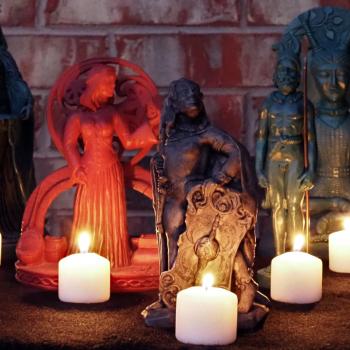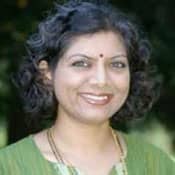Recently, the Bharatiya Temple of Metropolitan Detroit had a ceremony known as a Prana Prathishta, which was spread over five days as part of the expansion of a new Hindu house of worship. I have been an active volunteer at the temple over the last thirteen years, but I was not fully engaged in the expansion activity and the events around it. I have been concerned about building a larger temple when other ethnic faith communities—Sikh, Chaldean Christian—have been desecrated recently. Our existing prayer hall is rarely full except for the crowds during the major holidays, much like "Christmas and Easter Christians" or "Passover and Hannukah Jews." Nonetheless, the ritual installation of the new deities was an experience of a lifetime. It's not every day that a new temple is built or that new deities are installed, and the festivities drew me in.
The Prana Prathishta is an elaborate set of Vedic rituals, a process of "imparting life" into the new deities, conducted according to the rules of the scripture known as the Agama Shastra (temple architectural sciences). The priests went through the complex rituals—different for the various deities being installed in the temple—so that worshippers can have darshan. In various roles as the Temple's Outreach Committee Chairperson and member over the last several years, I have often explained darshan to non-Hindu visitors as a hierophany or an epiphany—a manifestation of the sacred.
Photographer Manjari Sharma explains darshan in a deeper way through Project Darshan, a series of photographs of Hindu deities utilizing people and cameras to create the divine. Sharma has introduced the concept of darshan into the mainstream media, starting with the New York Times, then NPR, and most recently the Huffington Post's iPad Magazine. She also defines it on the project website:
Darshan is a Sanskrit word that means vision or view and is most commonly used in the context of Hindu worship. It can also be defined as an apparition, or a glimpse. One may seek and receive the darshan of a deity and upon sight that darshan may invoke an immediate connection between that deity and the devotee. A darshan can ultimately be described as an experience purposed on helping one focus and call out to his or her sense of spirituality.
Sharma's project, which needs funding to be completed, involves using photography to create the sacred images of the Hindu deities that Sharma and many others grew up seeing all around them in India. Sharma, now a New Yorker, wanted to use photographs to present the divine, which Hindus usually depict through paintings and sculpture. She engaged more than 35 craftsmen to help with construction of sets, create the detailed costuming, and find people to pose as the specific god or goddess being photographed. The finished, six-feet-high images are being debuted at the Richard Levy Gallery in New York this year. The first five images, each scaled down in a space staged as Hindu temple, are complete with incense and oil wick lamps.
As I participated in the rituals and saw the crowds at our temple during the Prana Prathishta celebrations and had darshan, I reflected on something else that Sharma explained. In her interview with American Photography magazine, she drew an analogy between art and religion:
I began to see that there were great similarities between the experience of going to a temple and standing before these gods, and going to a museum and standing before an artwork. . .In a temple, you place your aspirations before the deity, and sometimes your wishes come true. Sometimes they don't, but that doesn't mean you stop going to the temple. At a museum you come to the art with hopes as well, and sometimes the art disappoints. But that doesn't mean you stop going to museums.
I attended activities and rituals on each of the five days of the Prana Prathishta, helping when asked. At other times, I just enjoyed the rituals. While there, I saw the temple unusually full of people. Some faces I had never seen, others I hadn't seen in a long time, and others—Hindus and non-Hindus alike—just came for the experience. I agreed with Manjari. I placed my aspirations before the deity that the temple will always be full, as it was during those five days. But even if it isn't, I will continue to go there for darshan.
12/2/2022 9:08:55 PM





